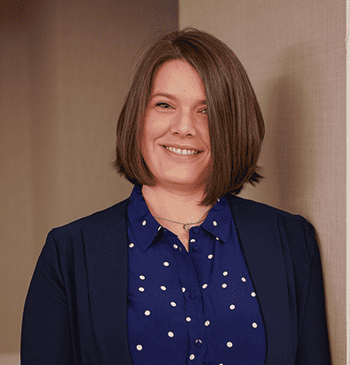Laura Alix is the Director of Research at Bank Director, where she collaborates on in-depth strategic research for bank directors and senior executives, including Bank Director’s annual surveys. She also writes for BankDirector.com and edits online video content. Laura is particularly interested in workforce recruitment and retention strategies, and environmental, social and governance issues facing the banking industry. Previously, she covered national and regional banks for American Banker, and before that, she covered community banks for Banker & Tradesman and The Commercial Record. Based in Boston, she has a bachelor’s degree from the University of Connecticut and a master’s degree from CUNY Brooklyn College. You can follow her on Twitter or connect on LinkedIn.

‘Higher for Longer’ Forces Rethink of Deposit Strategies
Deposit costs continue to rise, pressuring bankers to strike the balance between growing these funds and pricing them competitively.
First quarter earnings calls from big banks like Wells Fargo & Co. and Bank of America Corp. indicate that higher deposit costs could be here to stay.
Costlier deposits will continue to pressure net interest margins. Though the Federal Open Market Committee last raised interest rates in July 2023, to a target range of 5.25% to 5.50%, deposit costs have continued to tick up across the industry as more consumers moved money into higher-yielding account types.
“We do have to wait and see how clients are going to react, and I think we do our best to try to come up with a range of outcomes there, given what’s happening in rates plus what’s happening in quantitative tightening, what’s happening in the economy overall,” Wells Fargo Chief Financial Officer Michael Santomassimo said on the company’s April 12 earnings call. Like all banks, those factors affect depositor behavior. “We feel better today than we did in January about where we are, but there’s a lot to play out for the rest of the year.”
Bank Director’s 2024 Risk Survey found that 64% of senior bank executives and directors named deposit pricing as the one of the top strategic challenges facing their bank, compared with 51% last year. Additionally, 78% said their bank’s net interest margin contracted over the past year due to rising rates, up from 26% a year ago.
With an interest rate reduction looking more uncertain, the days of ultra-cheap and plentiful deposits may be behind us. If that’s the case, how are banks adapting their deposit gathering strategies?
“I do think this is going to be the new normal that we have now,” says Neil Stanley, founder and CEO of The CorePoint, a bank deposit consulting firm. He points to a strong labor market and growing GDP. “The motivation to lower rates just doesn’t seem apparent to me.”
Christopher Marinac, director of research with Janney Montgomery Scott, expects that deposit costs will soon level out but could continue to rise slightly in the meantime. He anticipates that banks will experiment with different techniques to keep existing depositors happy, either offering slightly higher rates or trying out new rewards.
“I don’t know that we’ve found this magic moment where deposit costs have stopped going up,” he says. “Deposits are going to be priced to keep people happy, and a definition of happy is not necessarily the federal funds rate, but it’s probably higher than banks were paying as recently as this month or last month.”
The challenge bankers face now is to appropriately manage deposit costs without sacrificing too much in the way of volume. While banks don’t want to pay more for deposits, they also don’t want to lose deposits, either. Bank leaders have to strike a balance.
“The industry has gone through periods of time that are so much harsher than this,” Stanley says. “The existential risk is in not addressing the new environment. If you are waiting around for a return of yesteryear, that’s not going to work.”
Stanley says some banks could offer “balance builder”-style deposit products that reward existing customers with a higher premium rate on any balance they move over to their bank. Stanley contrasts that with promotional teaser rates that are often only offered to new customers.
He also recommends other practices that may help attract deposits, including timing promotional campaigns to coincide with competitors’ maturing promotional specials and publicizing certificates of deposit with penalty-free early withdrawals. Bankers may also consider using alternative marketing channels, including social media, to bring in new deposits.
Stanley adds that bankers could invest in training for frontline staff so they are better prepared to work with existing customers who are dissatisfied with their deposit rates.
Banks could also tie deposits to a more favorable rate or term on a loan or line of credit.
While commercial bankers might have once been content to handshake on that type of agreement, they’re now putting it in writing more regularly, says Brandon Koeser, financial services senior analyst at RSM US LLP. If a client doesn’t move an operating account or other deposit account over within a fixed period, a higher rate on the loan kicks in.
“Among banks that were lending to a [commercial] borrower and not getting deposits, the attitude is shifting. ‘We want to do the loan, but we also want to hold your deposits.’ They are working very hard to enter into agreements with a borrower, in order to retain that liquidity,” he says. “Two years ago, the deposits were a bit of an afterthought.”


